Even though we’re fortunate to live in a water-rich part of the world, we still try to conserve water and keep it clean.
Perhaps one of the most important things we do is to use native plants adapted to our local conditions. Except for new plantings and persistent droughts, we rarely water our plants. We don’t water our minuscule lawn either.
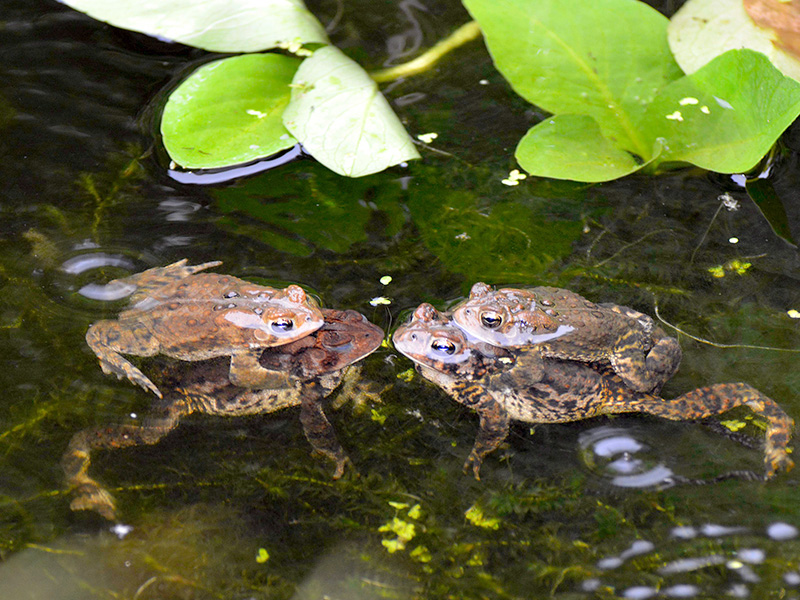
We sometimes add water to our pond/stream and to our wildlife pond when it hasn’t rained for a while, but the amount is much less than people use washing their cars, for example, and these habitats are valuable for birds, dragonflies, toads, and other little creatures.
Rain barrels
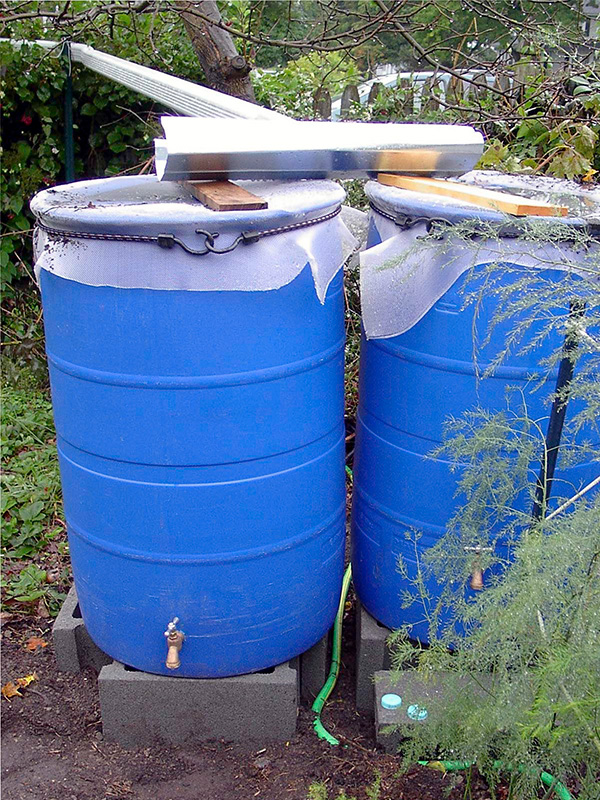
John created rain barrels from $15 barrels that had contained apple juice concentrate.
He cut out most of the top, put in a spigot at the bottom, and to protect against mosquitoes, he covered the top with window screen held on by bungee cords.
One of our four roof gutters directs rain into the barrels, and a separate piece of gutter at right angles directs the water into both barrels.
We found that so much rain falls even in a short shower that we added more rain barrels at another downspout.
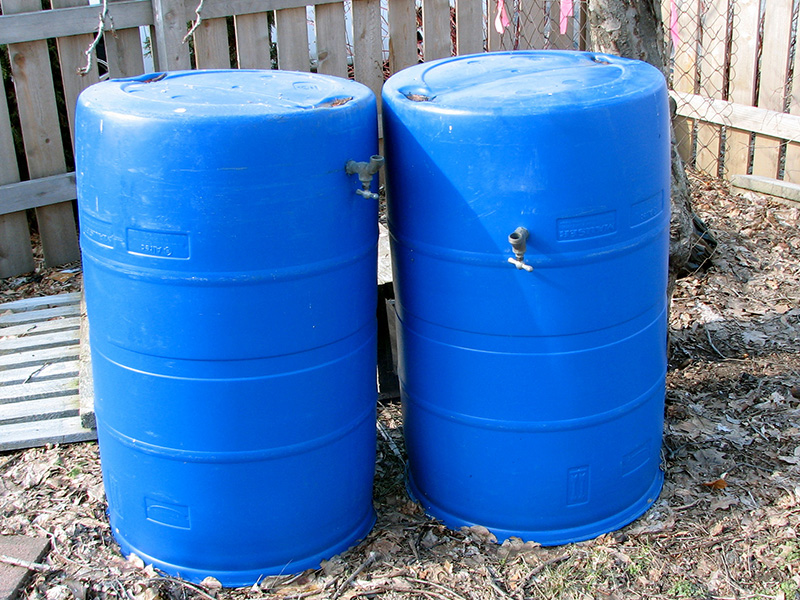
We disconnect our rain barrels during the winter; otherwise, ice would form inside and crack the plastic. Then we turn them upside down.
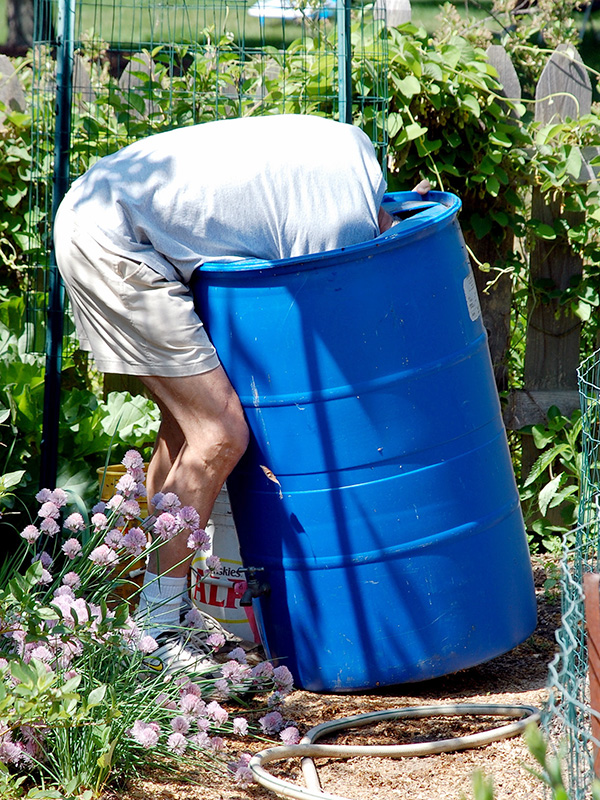
We (i.e. John) clean out our barrels in spring.
Rain in our yard affects our whole county
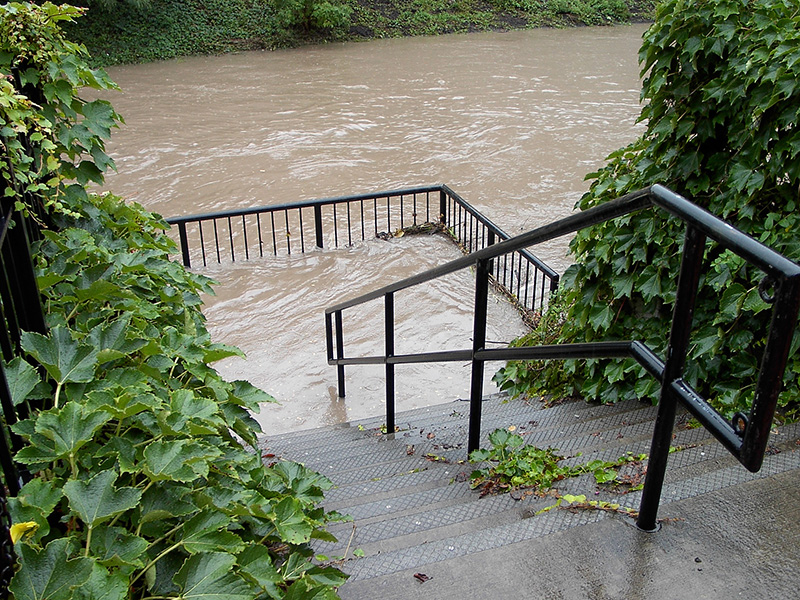
The huge amount of rain water caught by our rain barrels would otherwise go into our sewer system. This helps more than just our own yard.
Since our county has combined sewer overflow (i.e. sewage and excessive rainwater go into the same pipes), storms often exceed the sewage treatment plant’s capacity.
If all people in a community arrange things so the water that falls on their property stays on their property, I suspect this wouldn’t be as much of a problem.
Our own goal is to prevent any storm water runoff from leaving our property. Otherwise, such runoff flows into Onondaga Creek, and the combined sewer overflow results in mixing sewage and stormwater. Yuck!
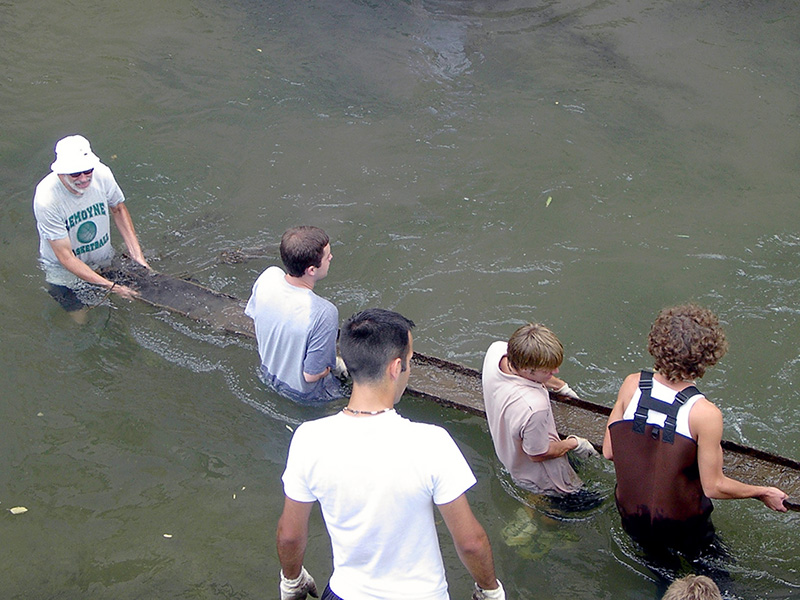
SUNY-ESF students are helping clean the creek of all the garbage people throw into it.
John helped with the effort — he’s there in the photo on the left.
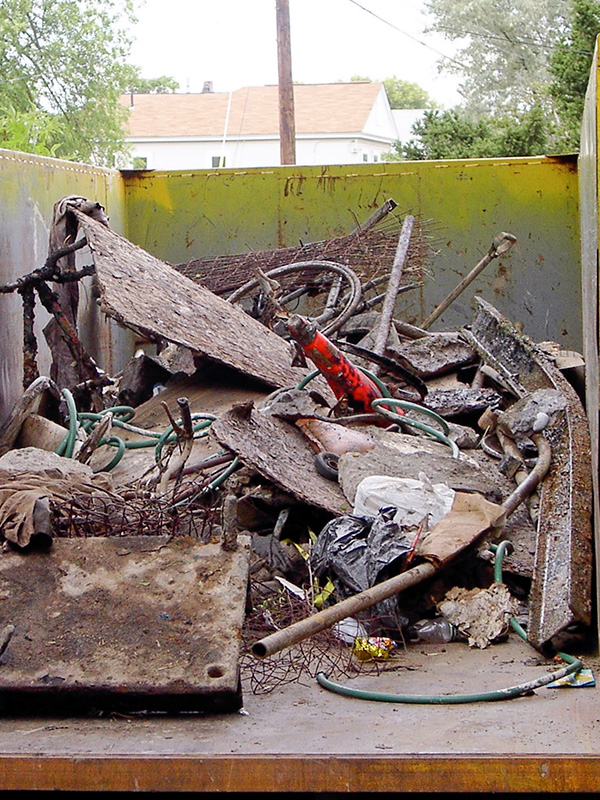
And here is just a small part of the large amount of garbage found in our community’s stream. People seem to use it as a garbage dump.
The ESF students found lots of shopping carts, bikes, and street signs (one of which we now use as a “door” to our groundhog fence in our edible garden).
Fortunately, our county executive scrapped previous plans to build massive sewage treatment plants to deal with Onondaga County’s sewage and is working on green infrastructure instead. An important part of this plan is for homeowners to install rain barrels!
Another aspect of water conservation in our county is the enormous amount of energy used to clean water. When we toured the county sewage treatment plant, we were astonished at the amount of water being moved around — moved around, of course, by using energy. It’s an insane use of energy to move around and treat so much rain water, much of which (now potable water) is destined for watering lawns, washing cars, flushing toilets, and a multitude of uses that don’t require potable water.
Of course, treating sewage could be considered an additional waste of an enormous amount of energy when composting toilets could do the job on-site. And why are we using this treated, potable water in our toilets anyway?
Rain gardens
Rain gardens are another important way to prevent such runoff. Unfortunately, we don’t have a good spot for one, and we really don’t need one since we’re already keeping almost all rainwater on our property. They’re a beautiful way to conserve water, though, and we’d create one if we could or should.
Rain gardens are especially nice because they provide an opportunity to grow some plants that appreciate some extra water (though a proper rain garden doesn’t retain water permanently, just long enough for it to be absorbed).
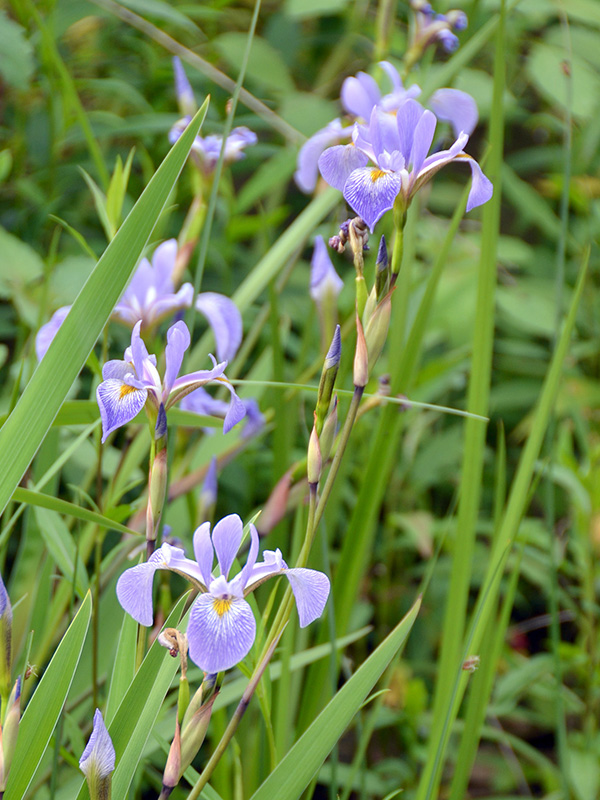
Blue flag iris (Iris versicolor), for example, is one of many beautiful native plants that thrive in a rain garden.
The one shown here is growing in our pond, though I’ve found that they also grow well in regular soil — an experiment I tried and was surprised at its success.
Resources
- Cornell Cooperative Extension:
- Maine Cooperative Extension:
- Maine Organic Farmers and Gardeners
- Sponge landscapes – absorb rainwater back into the earth
- NY Times:
- Washington Post:
- Penn State Extension:
- Watershed-friendly deicing
- Role of trees and forests in healthy watersheds – including suburban/urban forests!
- Rain barrel winter maintenance – Don’t forget to disconnect!
- Watersheds:
- Watersheds in Onondaga County – We all live in a watershed. This website is specifically about our own county, but it explains what a watershed is
- NOAA:
- Drought monitor
- Drought map Spring 2021 – Even our level of drought in CNY is disturbing, but it’s even more alarming to see other parts of the country. We must tackle climate!
- Conservation Int’l:
- VIDEO: Penelope Cruz is Water – Part of the “Nature is Speaking” series
Reflections
To keep our grass green all summer, Lawn Doctor prescribed 1 inch of water a week, a total of 24 inches during the growing season, or more water than falls as rain from May through October anywhere in the United States.
~ Sara Stein, Noah’s Garden: Restoring the Ecology of Our Own Back Yards, 1993, pp. 136-137 (NOTE: Annual precipitation in the Northeast averages 43 inches, but most of it is during winter.)
We have been quick to assume rights to use water but slow to recognize obligations to preserve and protect it … In short, we need a water ethic—a guide to right conduct in the face of complex decisions about natural systems we do not and cannot fully understand. … For many of us, water simply flows from a faucet, and we think little about it beyond this point of contact. We have lost a sense of respect for the wild river, for the complex workings of a wetland, for the intricate web of life that water supports. … Water is the basis of life and the blue arteries of the earth! Everything in the non-marine environment depends on freshwater to survive.
~ Sandra Postel, Last Oasis: Facing Water Scarcity
If all the world’s water were fit into a gallon jug, the fresh water available for us to use would equal only about one tablespoon.
~ Water Facts
Water and air, the two essential fluids on which all life depends, have become global garbage cans. … We forget that the water cycle and the life cycle are one.
~ Jacques Cousteau
Filthy water cannot be washed.
~ African proverb
When the well is dry, we know the worth of water.
~ Benjamin Franklin
All the water that will ever be is right now.
~ National Geographic
